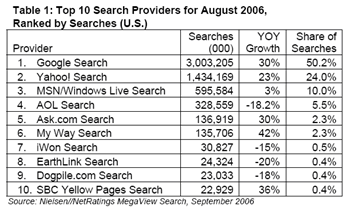Google works by having thousands of servers located around the globe. When a user attempts to connect to Google their servers determine which server to direct them to – based on geographical location and traffic load upon those servers. Once a user is connected their search is routed again to the least loaded web server before the search results are returned back. The size of such a network requires dedicated servers to achieve certain tasks. Examples of these servers are follows:
- Google DNS Servers €“ direct user traffic to the best placed web and data servers so the user experiences a fast response.
- Google Web Servers €“ process user search strings and return search results after contacting spelling and advert servers.
- Advert Servers €“ manage Google Adword advertisements.
- Spelling Servers €“ suggest spelling suggestions for user search strings.
- GoogleBot Servers €“ dedicated to crawling the web and indexing web pages.
- Document Servers €“ used to store copies of web pages when they are indexed. These servers store the cached versions of pages.
- Index Servers €“ links document server records to result pages.
With so many servers around the world it is a huge task to maintain consistent results. For this reason search results can vary by day to day and even hourly as Google updates its index continuously – this is commonly referred to as the ‘Google Dance’.
The search results returned by Google are based on pages they have indexed being passed through Google search algorithms. These algorithms are kept very secretive but the best known algorithm they employ is the patented PageRank (http://en.wikipedia.org/wiki/PageRank). The results having then been filtered and sorted are returned to the end user.
Periodically Google do major changes to their algorithms which can cause well ranking websites to suddenly drop in the search results but on the upside other sites can substantially gain. With ever changing Google algorithms and indexed pages it is difficult to view changes in search engine placement over time. Following known processes called Search Engine Optimisation over time should result in improved search ranking.

